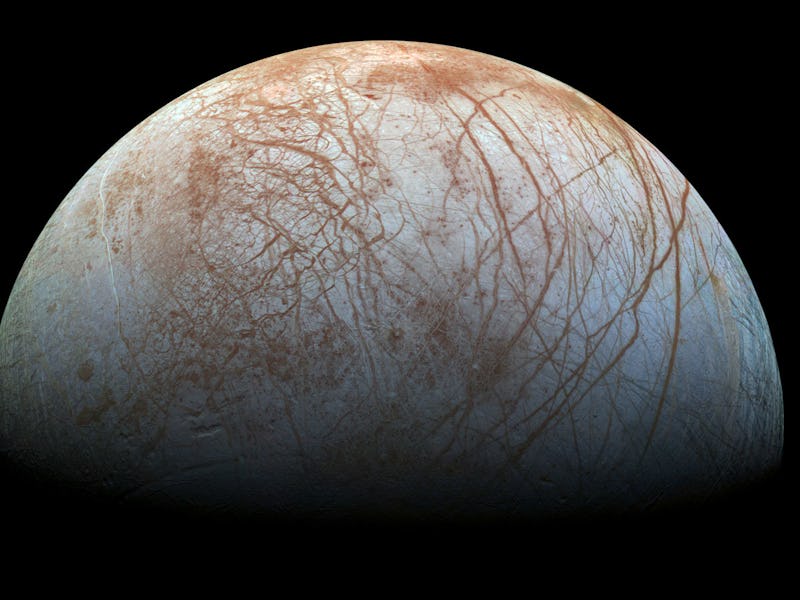Back in the 19th century, sleek clipper ships sailed around the globe, braving dangerous oceans as they explored uncharted waters and made daring trade missions. Now, in 2017, NASA is looking to those old three-masted vehicles for inspiration as they prepared to send another vehicle out to explore icy waters — only these just happen to be almost 400 million miles away from Earth. The agency’s upcoming mission to explore Jupiter’s mysterious moon has officially been named the Europa Clipper.
NASA announced the name of the mission, which is set to launch in the 2020s, on Thursday night. According to a release, scientists and engineers informally called the project the Europa Clipper when it was still in the conceptual phase, but it’s now an official moniker.
The Europa Clipper will, once it’s in Jupiter’s neck of the Solar System, will regularly fly very close to the moon. NASA says the prime mission plan aims for 40 to 45 flybys, which could mean the craft will swoop in every two weeks. When it’s in position, the Europa Clipper would take high-resolution images of the moon’s icy crust while trying to determine what the body is made of — and what’s going on with the oceans lie underneath the frozen surface. Europa could contain the building blocks of life, and the Clipper will teach us much more.
A seafaring clipper ship.
“During each orbit, the spacecraft spends only a short time within the challenging radiation environment near Europa. It speeds past, gathers a huge amount of science data, then sails on out of there,” Robert Pappalardo, Europa Clipper project scientist at NASA’s Jet Propulsion Laboratory, said in a statement.
There aren’t a ton of additional details at this point — the mission just got a name, remember. NASA says it will launch sometime next decade, and arrive at Jupiter some years after that.
